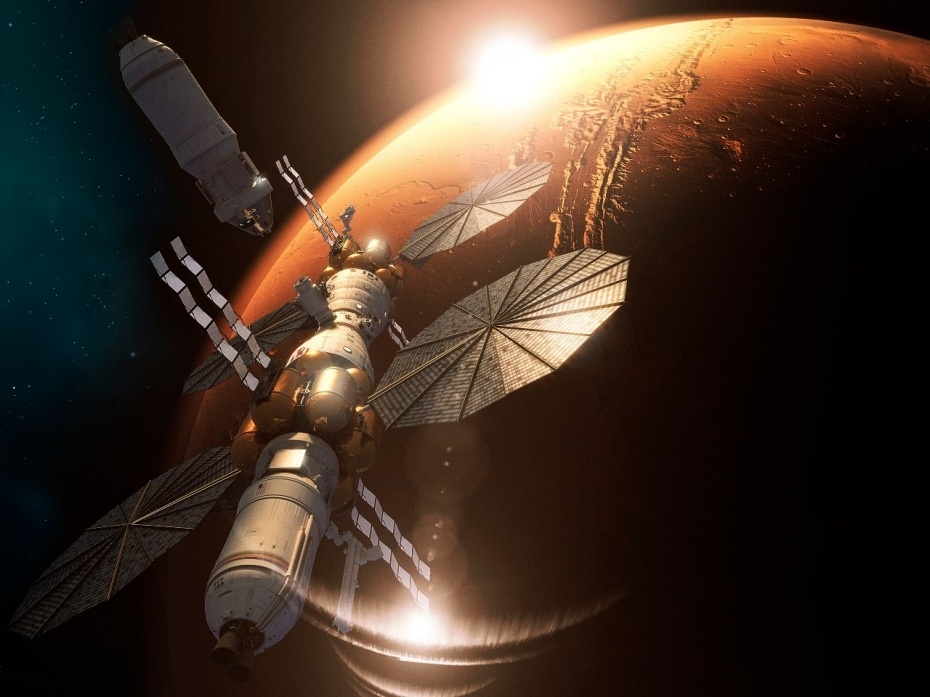25.05.2023
The agency is finding it quite challenging to make their Mars vision a reality in the next 16 years.

Astronauts may orbit Mars by 2033, but setting foot on the Red Planet by the end of next decade would be an "aggressive" and "audacious" goal, according to NASA officials.
To make the 6-month flight to Mars and land by 2040, humans would have to leave Earth in 2039, a vision that was previously mentioned by NASA administrator Bill Nelson and former chief Jim Bridenstine. But the agency is finding it quite challenging to make that vision a reality in the next 16 years.
"And I'd say that is an audacious goal for us to meet," Jim Reuter, associate administrator for the agency's Space Technology Mission Directorate (STMD), said on Wednesday (May 17) at the Human to Mars Summit in Washington, D.C. "It may sound like a lot, but it is very short time to develop technologies we need to develop."
For one, a crewed landing mission on Mars by 2040 would require humans to establish presence on the moon — NASA's first priority to serve as a stepping stone to Mars — in the early 2030s. The agency plans to extensively use its future space station called Gateway, which will orbit the moon and host supplies and occasionally even astronauts, to run mock Mars missions.
Such an analog mission would unfold something like this: Astronauts will fly to and reside in the Gateway for six months — akin to a one-way trip to Mars, spend 30 days on the moon to simulate working on the Red Planet, and return to the Gateway for another six months to mimic the journey back home.
The closest we've gotten to such test missions on Earth is the HI-SEAS habitat in Hawaii, where astronauts pretend to be on Mars, including dealing with a 20-minute communication delay. However, the Hawaiian habitat does not replicate Martian gravity, which is 38% lower than Earth's. So NASA officials plan to use the moon-orbiting Gateway, which will be the first such outpost outside of low Earth orbit, to test how humans respond to low gravity conditions.
Also, the space station will pass through the Van Allen radiation belt, so the simulated space missions will also be useful to test "advanced radiation protection technology" currently being developed, but those tests will take time, said Reuter.
Those aren't the only hurdles facing NASA at the moment. One of the space agency's many partnerships for the moon and Mars missions is with SpaceX, whose fully reusable spacecraft-rocket combo called Starship was selected for the Artemis 3 mission to the moon. However, the 100-passenger Starship vehicle, which was chosen to land astronauts near the lunar south pole in 2025, failed to reach orbit during its debut space launch in early April and was commanded to explode just under four minutes after liftoff.
The company's Ship 25, the latest prototype of what may become the upper-stage of a second Starship test flight, was tested in South Texas on Friday (May 19), company representatives said via Twitter. Meanwhile, the Artemis 3 mission planned for 2025 is looming in the near future.
"We need Starship to launch and be successful for our first lander," Jim Free, associate administrator for NASA's Exploration System Development Mission Directorate, said at the Human to Mars Summit on Wednesday. "It is a good contract structure in terms of cost savings, but we still need to hit schedule."
NASA officials also emphasized their dependency on ongoing, "tightly coupled" commercial, academia and industry partnerships both in the U.S. and internationally. Canada, for example, is building a robotic lunar utility vehiclethat could "work autonomously when the crew is not there, but can follow the crew along," Free said.
"We can have robots scout and astronauts control them, much like you see soldiers controlling drones today," Free said, adding that the vehicle would help astronauts explore the lunar surface without taking risks, like venturing into a permanently shadowed crater.
"It is going to take those kind of partnerships and those kind of relationships to do these big hairy audacious goals that we want to do," Nicola Fox, associate administrator for the Science Mission Directorate overseeing over 100 key missions and projects, said at the summit.
Quelle: SC
